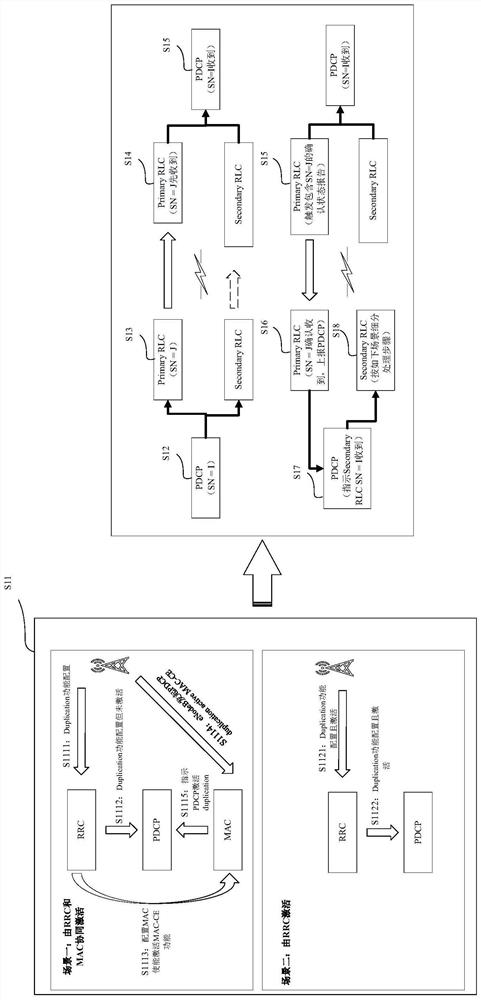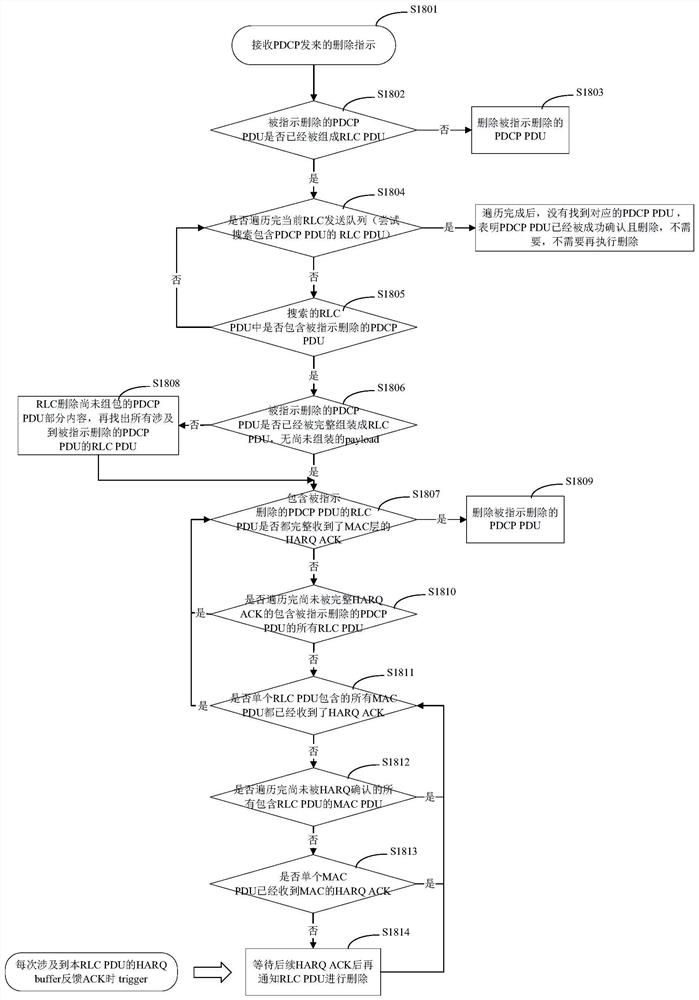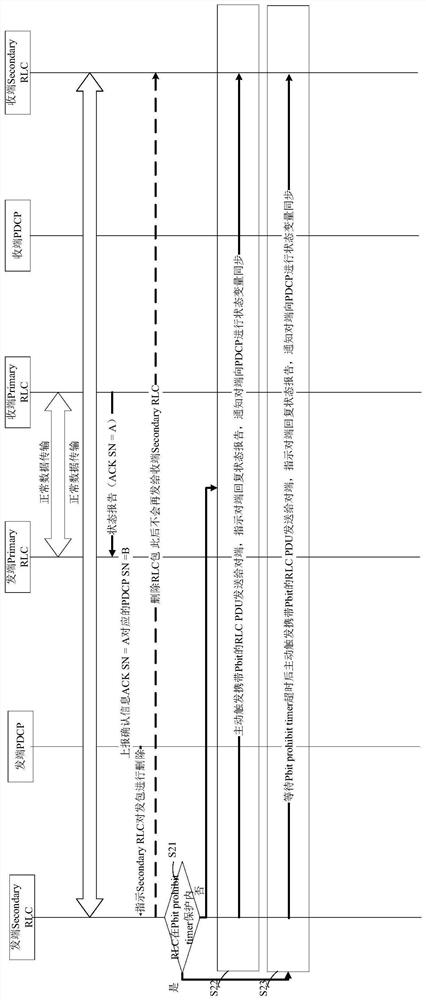Data deleting method, data synchronizing method, transceiving terminal, electronic equipment and storage medium
A data synchronization and deletion method technology, which is applied in the direction of synchronization devices, electrical components, wireless communication, etc., can solve the problems that the memory cannot be released in time, affects the confirmation speed of the peer RLC, and reduces the effective value of T-Put, etc.
- Summary
- Abstract
- Description
- Claims
- Application Information
AI Technical Summary
Problems solved by technology
Method used
Image
Examples
Embodiment 1
[0098] According to the existing technology, RLC will only actively delete data packets that have not been assembled into RLC PDUs. This is correct and reasonable in non-duplication scenarios, but when the duplication function is enabled, because the peer PDCP has already received it, so In some cases, it can actually be deleted. For example, the MAC has received the ACK, but the status report cannot be received in time due to the status report prohibit timer (prohibited timer) or other reasons. The confirmation of the status report will definitely be received. Therefore, in this scenario, RLC can discard the corresponding PDUs that have been packaged.
[0099] Based on the above considerations, this embodiment provides a data deletion method applied to the PDCP duplication scenario at the originating end, so that in the PDCP duplication scenario, when the MAC has received the ACK, even if the status report has not been received, it can also delete the data. PDCP PDUs that ha...
Embodiment 2
[0170] This embodiment provides a sending terminal, which is used to delete data in a PDCP duplication scenario. Such as Figure 5 As shown, the sending terminal includes:
[0171] The data deletion module 51 is configured to, in the PDCP duplication scenario, when the RLC receives a deletion instruction from the PDCP, if the PDCP PDU indicated by the deletion instruction has been assembled into an RLC PDU, then according to the RLC PDU in the air interface Determine whether to delete the PDCP PDU instructed to be deleted based on the current transmission status of the PDU.
[0172] In this embodiment, according to the current transmission state of the RLC PDU on the air interface, it is judged whether to delete the PDCP PDU instructed to be deleted, which may specifically include:
[0173] After all the MAC HARQ processes related to the PDCP PDU instructed to be deleted have received ACK or NACK reaching the maximum number of retransmissions, a deletion operation is perform...
Embodiment 3
[0186] This embodiment provides a sending terminal, which is used to perform data synchronization in a PDCP duplication scenario. Such as Figure 6 As shown, the sending terminal includes:
[0187] Data synchronization module 61, comprising:
[0188] The synchronization indication unit 611 is used to implement at the RLC layer:
[0189] Determine whether it is currently protected by the Pbit prohibit timer;
[0190] If it is not within the protection of the Pbit prohibit timer, the RLC actively triggers the RLC PDU carrying the Pbit to be sent to the peer end, instructs the peer end to reply to the status report, and notifies the peer end to synchronize the state variables with the PDCP;
[0191] If it is within the protection of the Pbit prohibit timer, the RLC waits for the Pbit prohibit timer to expire and then actively triggers the RLC PDU carrying the Pbit to be sent to the peer end, instructs the peer end to reply a status report, and notifies the peer end to synchron...
PUM
 Login to View More
Login to View More Abstract
Description
Claims
Application Information
 Login to View More
Login to View More - R&D
- Intellectual Property
- Life Sciences
- Materials
- Tech Scout
- Unparalleled Data Quality
- Higher Quality Content
- 60% Fewer Hallucinations
Browse by: Latest US Patents, China's latest patents, Technical Efficacy Thesaurus, Application Domain, Technology Topic, Popular Technical Reports.
© 2025 PatSnap. All rights reserved.Legal|Privacy policy|Modern Slavery Act Transparency Statement|Sitemap|About US| Contact US: help@patsnap.com



